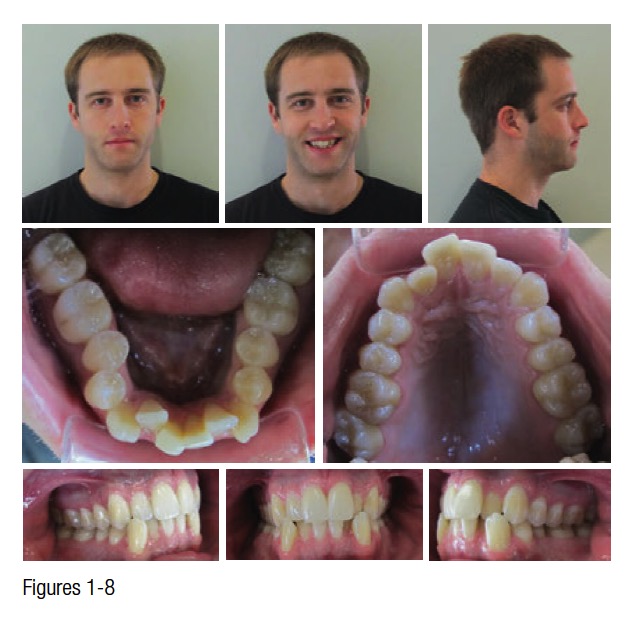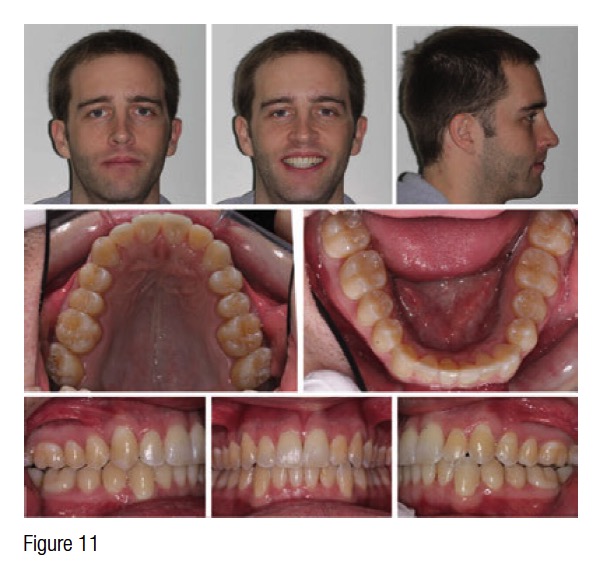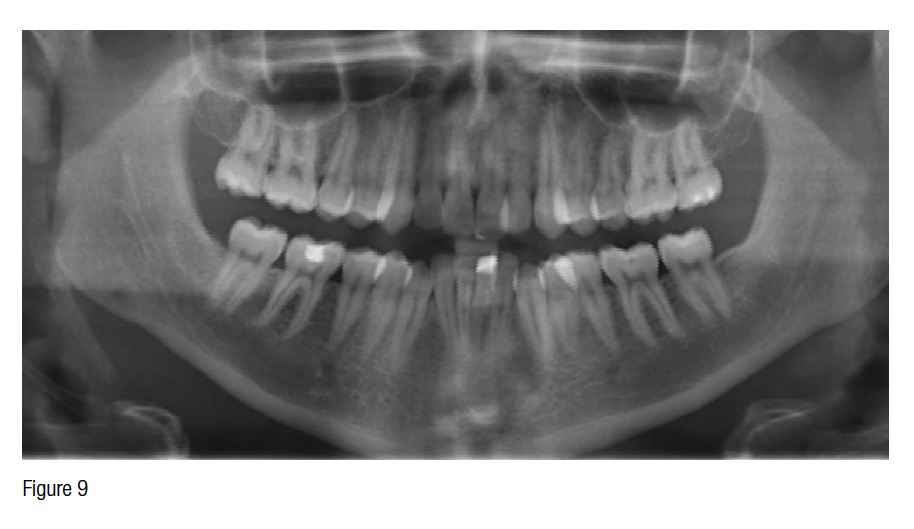Dr. David R. Boschken discusses a practice-building tool
What differentiates your practice? Customer service, technology, team, doctor skills? Perhaps all of these? However, there is still a special ingredient missing. The why of your business. Why do we do what we do? What drives companies to greatness while other companies fail? My why has always been delivering an exceptional customer service experience while offering innovative orthodontic technology, AND by the way, my customers get straight teeth. We are not just about straight teeth or a certain product. We are about connecting with people, establishing amazing experiences, and growing from all these experiences to make us better. Defining who we are and why our businesses exist is crucial to building a lasting and healthy work and personal life.
Treating aligner therapy customers for over 15 years with nearly 3,000 Invisalign® patient-starts has helped develop my practice as a leader. As Align Technology’s brand awareness has grown so has the innovation of aligner therapy. Even with all the latest advancements from Align Technology (G1-6, iTero® scanner) there are still stubborn teeth that do not track through aligners. Treatment that was supposed to finish in 12-14 months drags out with case refinements resulting in additional treatment time. Frustrated doctors and patients are not uncommon, resulting in the why not being achieved.
Clinical case
 A 28-year-old male patient with a Class 1 occlusion came to me concerned about his lower crowding. He presented with a moderate upper (3 mm) and lower (4 mm) crowding, 30% overbite, 2 mm overjet, lower midline shifted to the right .5 mm, and crossbite on upper 2s and lower 3s (Numbers 7, 10, 22, 27). (Figures 1-9).
A 28-year-old male patient with a Class 1 occlusion came to me concerned about his lower crowding. He presented with a moderate upper (3 mm) and lower (4 mm) crowding, 30% overbite, 2 mm overjet, lower midline shifted to the right .5 mm, and crossbite on upper 2s and lower 3s (Numbers 7, 10, 22, 27). (Figures 1-9).
Treatment was designed to address the crowding and establish an ideal functional alignment using Invisalign and Propel. Once the ClinCheck Treatment Plan was designed and accepted, the final number of aligners for the patient was 31 upper and 31 lower. Approximate treatment time was 16-18 months. The patient became concerned about the number of aligners and the length of treatment time. My treatment coordinator and I presented Propel during the consultation, suggesting that we could reduce the treatment length by 40%-50% and minimize the need for additional refinement aligners to which the patient agreed with an additional fee of $750-$1,000 to cover one to two recommended Propel appointments.
Aligner No. 1 was delivered along with the Invisalign Patient Cooperation and Instruction Acknowledgment Contract (in-house form) signed. The patient was instructed to wear the first aligner for 14 days and then come back for attachment placement. Once Aligner No. 2 and attachments were placed a few weeks later, a third appointment was scheduled a week later for the first Propel treatment.
Micro-osteoperforation (MOP) is an accelerated orthodontic technique that uses one of the Propel Excelleration drivers. These drivers are specifically designed to create micro-osteoperforations, which activate the cytokine immune response enabling an increase in tooth movement rates and resulting in speeding up treatment (Figure 10). This technique is performed chairside with the use of local infiltration or topical anesthetic.
MOPs were performed near the mid-to-apical interproximal root locations around the first bicuspids, canines, and laterals. Important to note is that each MOP has a 10 mm diameter effect resulting in cytokine immune response and temporarily decreasing bone density. This is the critical reason why perforations do not need to be done around every bone surface. Aligner Nos. 2-15 were given with instructions to wear each aligner 20 hours per day and switch out every 7 days.
Ten weeks later, the second Propel treatment was initiated with the same MOP locations. Aligner Nos. 16-25 were delivered with the continual progression of 7 days per aligner. Ten weeks later, the final 6 aligners were delivered.

 This case was completed in 7 months (28 weeks) compared to the suggested 16-18 months originally recorded on the ClinCheck Treatment Plan. No refinement was done. Final Vivera® (Invisalign retainers) were ordered and delivered (Figures 11-12).
This case was completed in 7 months (28 weeks) compared to the suggested 16-18 months originally recorded on the ClinCheck Treatment Plan. No refinement was done. Final Vivera® (Invisalign retainers) were ordered and delivered (Figures 11-12).
While evaluating the final records, arch alignment and crowding correction were considerably improved. I would have liked to activate a refinement to help expand the left posterior occlusion and couple the left first molars. However, this patient was on a mission to finish fast and move on despite my plea to refine and detail the posterior occlusion. With that said, Propel clearly shows that predictable and safe accelerated orthodontic treatment can be done within modern orthodontic offices.
As you can see with the preceding case results, Propel has changed the way I present my Damon® System and Invisalign. In the past, many teen and adult patients wanted a faster treatment option without compromising quality and predictability. As with many orthodontic providers who offer an active or passive self-ligating bracket system, predictability and speed go hand in hand. However, with Invisalign, the movements are predetermined using Align’s software and resulting in a set of aligners made to slowly move teeth. There is minimal room for shortening the treatment time from the prescribed 14 days/aligner protocol. Movements that look predictable on the ClinCheck Treatment Plan can move off track quickly resulting in midcourse correction, auxiliary elastic techniques, case refinements, and even fixed orthodontics. All these options have become “normal” in the course of treatment with Invisalign.
When presenting the records (pano, ceph, photos, study models, iTero scans, etc.) in the consultation room, we try to emphasize the problem, consequence, solution (PCS) model. Showing the patients their photos on a large screen TV helps illustrate the esthetic, function, and access to cleaning issues while seamlessly threading through the PCS model. Once the treatment solution is explained (Damon System, Invisalign, TADs, etc.) we offer the option of accelerated orthodontics.
Now that my practice is consistently offering Propel to every teen and adult patient who can benefit from accelerated orthodontics, we have seen an increase in our existing patients asking for the same options. Offering mid-treatment Propel has opened the door to speeding up braces and Invisalign cases, redirected cases going sideways, and managing patient’s motivation with the never-ending number of aligners. For example, if the existing patient is on Aligner No. 15 out of 30 switching out every 14-16 days per aligner coupled with 25-45 degree rotated anterior teeth, we offer them the opportunity to switch out every 7 days and finish in half the time. The cost to the patient is from $250-$750 depending on the number of treatments needed, cost to the doctor can be as low as $100.
One final perspective on differentiating my practice using the Propel technique is many of my general practitioner referral sources are excited to promote me as “the accelerated orthodontic doctor.” My treatment coordinators and I have worked tirelessly in the last 2 years promoting all of our orthodontic advanced techniques, especially Propel. Nearly 100 lunch meetings later, we are seeing patients asking for Propel, excited to learn they qualify for the procedure. Propel has not only helped differentiate my practice as a leader in advanced accelerated orthodontics and delivered consistent clinical results, but completely changed referral patterns in many dental offices in my area. I have not seen this much shift in referral patterns since Align Technology started training general dentists with Invisalign, requiring my orthodontic help with simple cases. Changing referral patterns gives the doctor a distinct advantage when competing in this modern orthodontic market.
When considering if Propel is right for you in your modern orthodontic practice, keep in mind a few key points. Early adopters are generally less than 15% of technology users, and yet they drive innovation and initial branding of your name synonymous with the products. Remember in 2000 at the AAO San Diego when hundreds of orthodontists got “certified” with Invisalign to discontinue use after only a few cases. Reasons varied from lack of control to patients who were not compliant. Fast-forward 15 years and 3 million treated patients later, and Align Technology is the clear definitive leader in aligner therapy. Customers are asking for Invisalign for a myriad of reasons, but mostly due to marketing and innovation. However, Invisalign is the No. 1 orthodontic brand in the world. All within a short amount of time, Align Technology has changed the way we think about orthodontic treatment, driven more patients into our offices than anytime in history, and rewarded the early adopters who stuck with the product. Those early adopters make up the majority of Elite and Super Elite Invisalign providers.
In short, Propel has been an integral tool and technique to building my accelerated orthodontic practice. No longer are we concerned about cases taking 2-3 years with countless aligners and refinements, bracket systems that struggle to finish difficult movements, and patients constantly asking the question, “When am I done with treatment?” Offering the latest accelerated orthodontic technology to improve our predictability and efficiency has made my practice more profitable and streamlined all systems, which in turn allow me more time to work on my why, offering exceptional customer service with every patient.
This information is sponsored and provided by Propel Orthodontics.
Stay Relevant With Orthodontic Practice US
Join our email list for CE courses and webinars, articles and mores




